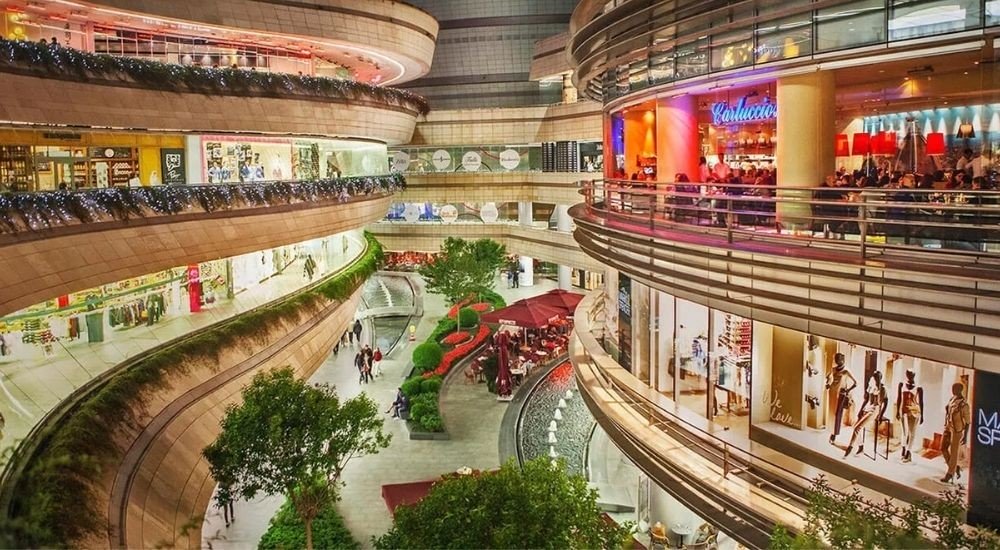
Shopping malls are not only places for shopping but also complex living spaces where people socialize, eat, watch movies, and spend long periods of time. Therefore, indoor air quality is critical not only for comfort but also for customer satisfaction, tenant loyalty, and brand perception.
However, many malls still face persistent problems:
-
Odor problems from the food court
-
Smoke issues due to insufficient exhaust
-
Stale air and poor circulation in large-volume areas
So how can these problems be solved? How do modern ventilation systems help? Let’s examine together.
1. Why Is Odor in the Food Court a Common Problem?
The most odor-prone area in a mall is undoubtedly the food court. Multiple brands use grilling, frying, and baking techniques simultaneously.
Problems:
-
Exhaust systems are often connected to a common duct → odor mixing occurs
-
Each restaurant has different cooking intensity → insufficient airflow adjustment
-
Exhaust air leaks back into the building → spreads to other floors
-
If filtration is inadequate → grease, VOCs, and smoke remain in the air
Modern Solution: Kitchen Ecology Units
The most effective method for odor removal in malls is to use dedicated ecology units for each tenant’s kitchen.
What is an ecology unit?
A multi-stage system that cleans kitchen exhaust air by filtering grease, particles, and odors before sending it into the main duct.
Components:
-
Guide filters
-
Grease-trapping metal filters
-
Electrostatic filter (high-efficiency particle trap)
-
Ozone filter (high-efficiency odor remover)
-
Activated carbon filter (odor remover)
-
Optional UV-C lamp or ozonation system
With this system, restaurants connected to the same duct do not affect each other’s odors.
Odor complaints decrease, duct clogging is prevented, and fire risk is reduced.
2. Smoke Issues: Invisible Danger, Visible Problem
Smoke sources in malls are not limited to restaurants:
-
Exhaust gases in enclosed parking areas
-
Leaks from smoking zones
-
High-powered lighting in store displays
-
Workshops, technical rooms, and kitchen areas inside the building
When smoke problems occur:
-
The air becomes suffocating
-
Fire alarm systems may frequently trigger false alarms
-
Customer traffic decreases, complaints increase
-
Tenants may consider relocating due to damage to brand image
Modern Solution: Smoke Exhaust Systems + Sensor-Controlled Fans
-
CO sensor-controlled fans in parking lots
-
Automatically operate based on carbon monoxide levels
-
Saves energy and continuously evacuates exhaust gases
-
Electrostatic filter + integrated smoke detector systems in restaurants and kitchens
-
Fan speed automatically increases when smoke rises
-
Sends a signal to fire systems if necessary
-
Positive/negative pressure zoning in general mall areas
-
Prevents smoke from spreading into clean zones
-
Protects corridors, elevator shafts, and cinema areas
3. Circulation Problems: Stale Air, Fatigue, and Reduced Sales
In large malls, a customer spends on average 1.5 to 3 hours. Continuously circulated but unrenewed air causes physical fatigue and psychological discomfort.
Symptoms:
-
“Heavy air” feeling in shopping areas
-
Headaches due to CO₂ accumulation
-
Fatigue and lack of motivation → shorter shopping time
Modern Solution: Fresh Air Supplemented, Smart Air Distribution
-
Energy Recovery Ventilation (ERV)
-
Extracts heat from indoor air and transfers it outside, while preheating incoming fresh air
-
Provides fresh air circulation while saving energy
-
CO₂ Sensor-Controlled Automatic Airflow
-
Fans speed up as crowd density increases
-
Slows down when fewer people are present
-
Optimized air distribution for high ceilings in large spaces
-
Air does not circulate only at the ceiling → distributed evenly to the floor
-
Provides thermal comfort → reduces AC complaints
4. Make the Entire System Smart with Automation
Manual systems make energy control and problem detection difficult. HVAC automation allows:
-
Real-time monitoring of air quality on each floor
-
Filter alerts based on odor levels
-
Emergency scenarios with smoke sensors
-
Exhausts in restaurants operate according to capacity
-
Prevents energy waste and prolongs system life
5. These Solutions Offer Commercial Advantages, Not Just Comfort
-
Odor problems decrease → tenant turnover rate drops
-
Customers stay longer → spend more
-
Budget for technical failures decreases
-
Fire risk and maintenance costs drop
-
Complaints decrease, customer satisfaction increases
Invisible Systems Deliver a Distinct Shopping Experience
Malls can be architecturally impressive and have strong brand mixes. But in a stuffy, smelly, or smoky environment, a customer may never return.
Modern ventilation systems address technical needs while ensuring customer comfort, tenant satisfaction, and operational sustainability.
Remember: Clean air is invisible but perceptible. And this perception affects shopping decisions.
İlker KURAN
Alperen Mühendislik Ltd. Şti.







